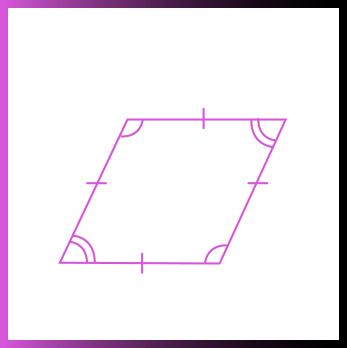Parallelograms and Rhombuses
What characteristics do parallelograms and rhombuses have?
Goal:
Goal:
Parallelograms and rhombuses are two more quadrilaterals that you will come across throughout your studies. Work through the activity below to learn more about these common quadrilaterals.
First, take a look at each shape below. Use what you have learned about mathematical symbols to determine what characteristics each shape has that makes it easy to identify.


What symbols do you notice on each shape?
What do these symbols tell you about these shapes?
| Your Responses | Sample Answers |
|---|---|
| There are symbols for congruent angles and symbols for congruent sides. | |
| They are quadrilaterals that have both pairs of congruent sides and angles. | |
Now that you have had a chance to examine each shape and share your thoughts, click each tab below to learn more about these special quadrilaterals.

- The opposite sides of a parallelogram are congruent.
- The opposite sides of a parallelogram are parallel to each other.
- The opposite angles in a parallelogram are congruent. In the image above, the first pair of congruent angles are marked with one curved line. The second pair of congruent angles are marked with two curved lines.
What is the difference between a rhombus and a parallelogram?
